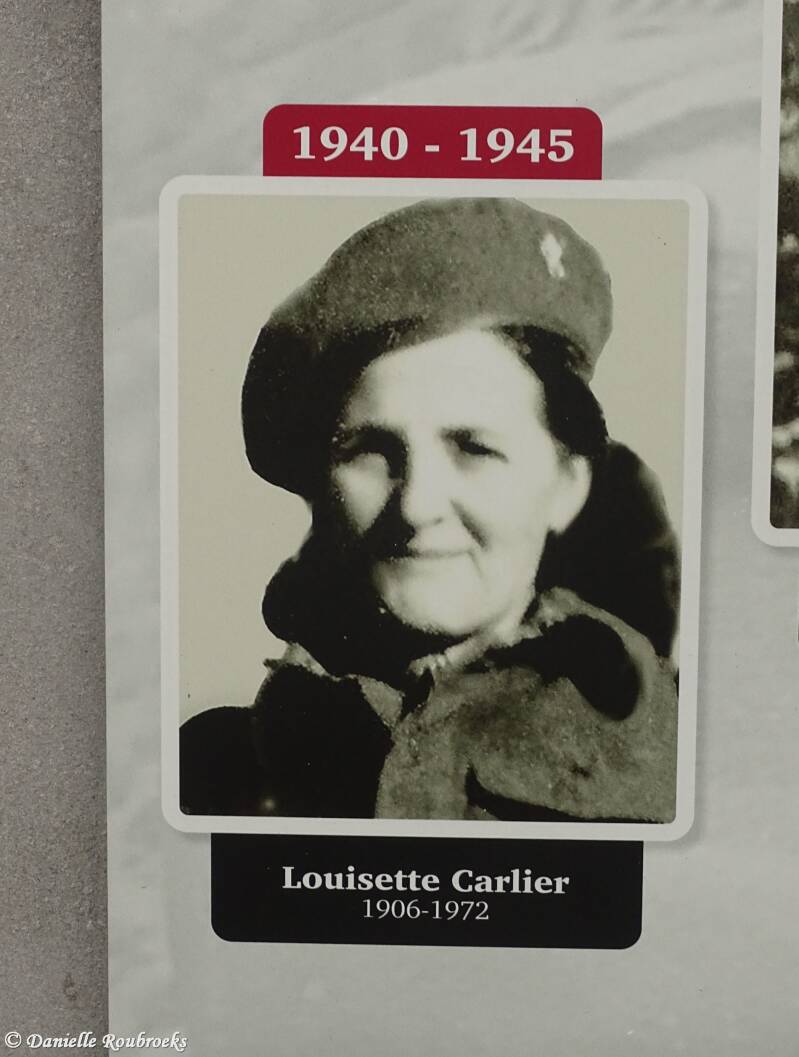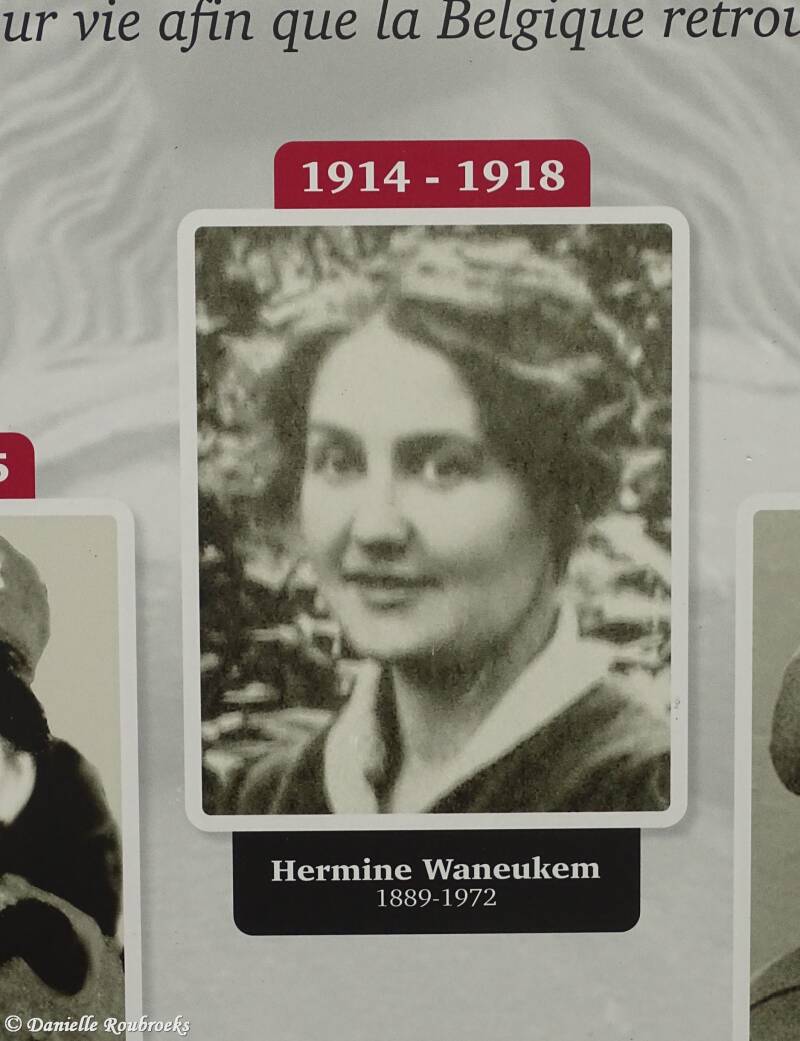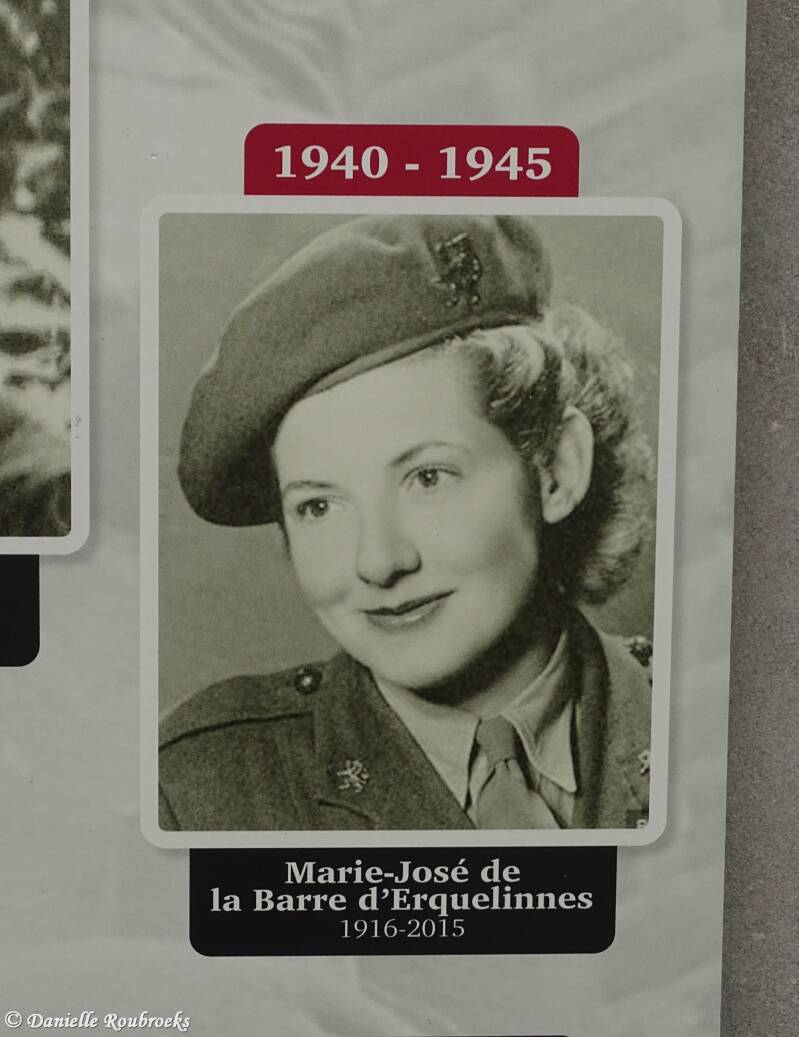Jurbise Resistance Memorial
Memorial at the church for 3 resistance women.
Louisette was born in 1906. She was 34 years old in 1940 and had two children when the war broke out. She resisted from the beginning of the conflict. She is part of several networks: Sabot (escape network to France and the Free Zone), Tégal and Zéro (intelligence gathering networks to pass on to the Belgian government in exile and the British), and then, from 1941, of the Belgian Legion. In 1942 she also collaborated with the French Marco-Polo network. It organizes and enables the crossing of the demarcation line for soldiers, civilians or young Belgians who want to reach Great Britain to continue the fight. It makes more than 50 journeys between Belgium and France, where 987 people can pass.
She was arrested at Mons station on September 4, 1942. She first stayed in two Belgian prisons: Mons from September 4, 1942 to August 12, 1943, Sint-Gillis from August 12 to 14, 1943. She was sentenced to death on March 4, 1943 for aiding the enemy and espionage. The sentence was suspended on March 29. A second death sentence was handed down on June 4, 1943. His execution, scheduled for June 18, has been postponed to a later date. After being pardoned, she was sent from prison to prison. The last was that of Aïchach, near Munich, where it was liberated by the Americans on April 29, 1943.
She had sworn to herself that if she returned alive from captivity, she would settle in Montrichard, in the Loir-Et-Cher, a place she knew well and was conveniently located for the passage to the free zone. After recovering her health in Switzerland and staying in Belgium, she moved to France and lived there until 1972. Louisette Carlier died on the night of January 1 to 2, 1972 at the home of her daughter Emilienne in Sint-Pieters-Woluwe. She is buried in Hercinian soil.
Hermine was born in Bracquegnies on April 18, 1889 and followed her father, a railway worker, during his numerous transfers. She is 27 years old and lives in Brussels, where she works as a seamstress, while within a spy network called "Carlot-Louis" she is responsible for recruiting men to set up a railway intelligence network. the Germans. The purpose is to inform the Allied General Staff of their movements. The young spy has the code name “Rosette”. The entire Waneukem family actively participates in this spy network. Father Arille, born in Jurbise, and mother Marie, originally from Herchies, are on the one hand head of department, responsible for the mail and on the other hand recipient within the same network. Hermine is one of the brains of the network. The latter had problems with the German police in July 1915. One of the members denounced the entire network in November of the same year. At the end of 1915, 39 people were arrested. Hermine's arrest took place on December 1 of that year. As for his father, he was arrested on January 5, 1916. Marie Briffeuil, the mother and wife, never worried despite searches of Salzinnes' home by German police.
On February 29, 1916, the trial began in Mons, in what is now the Royal Theater, against 39 defendants, including three women, who had to answer for “Crime of treason and espionage”. This process is known as the “Great Trial of Mons”. Hermine Waneukem is defended by the Brussels lawyer and poet Thomas Braun. He speaks German and addresses the officers in the courtroom in eloquent and pathetic terms. He asks them what they will say to their daughter after the war if she asks them one or more questions about the trial in Bergen. “Father, you who held the fate of this young girl in your hands, what have you done? Tell me, what would you like to answer him? Did I have her shot or did I pardon her? ".
This defense technique works. She was first sentenced to death twice and, after an appeal by the court itself, was commuted to fifteen years of hard labor for life. She was sent to two different camps in Germany: first to Siegburg and then to Saxony. She was released on November 11, 1918. Her father, sentenced to 15 years in prison, was also interned in a German camp. Hermine will resume a 'normal' life after the war. During the Second World War she was not part of any resistance movement. In the 1960s she moved with her second husband to Erbisoeul, where she died in September 1972. She is buried in the cemetery of Erbisoeul.
Marie-José was born on April 30, 1916 in Cuckfield, Sussex. Her parents, Count Henri de la Barre d'Erquelinnes and Countess Berthe du Parc-Locmaria, were refugees in England during the First World War. At the end of the conflict they will join the Château des Viviers in Jurbise. In 1938, Marie-José joined the motorized corps of the Red Cross. After May 1940, officers of the Italian army present at the Chièvres base established their headquarters in the family castle. In October 1940, Baron Albert Kervyn de Lettenhove recruited her. Kervyn belongs to the first intelligence network in which the contribution of nobles is important: the 'Friends of Charles'. This is officially part of the Zero network. When we talk about Charles, we are talking about Charles Woeste, doctor of law from Leuven and secretary at the Pension and Disability Office. He is the grandson of the Minister of Foreign Affairs of the same name, who received a hereditary nobility award in 1914.
Kervyn is responsible for organizing aerodrome surveillance. Marie-José, with whom he danced Avant-Guerre, is a valuable help to him. Italians are talkative. She collects information about the German planes present in Chièvres. The British need to know the ratio of bombers to fighters. Marie-José recruits agents for the service. Starting in June '41, after the accidental arrest of a member of the network, the organizational chart was revised and corrected. The network is divided into five sections. Marie-José takes care of the aviation. In October '42, Charles Woeste was arrested. Marie-José senses danger coming. She then crossed France, Spain and fled from Portugal to England. There it is included in: “Belgian emergency aid”. In the fall of '44 she worked as a liaison officer at an American base in Marseille.
In 1946, back in Belgium, she married Charles Villiers, a British citizen, whom she met in Brussels. She is going to live in England. Two daughters were born from this marriage. She became friends with Queen Mother Elisabeth. She died on February 1, 2015.









